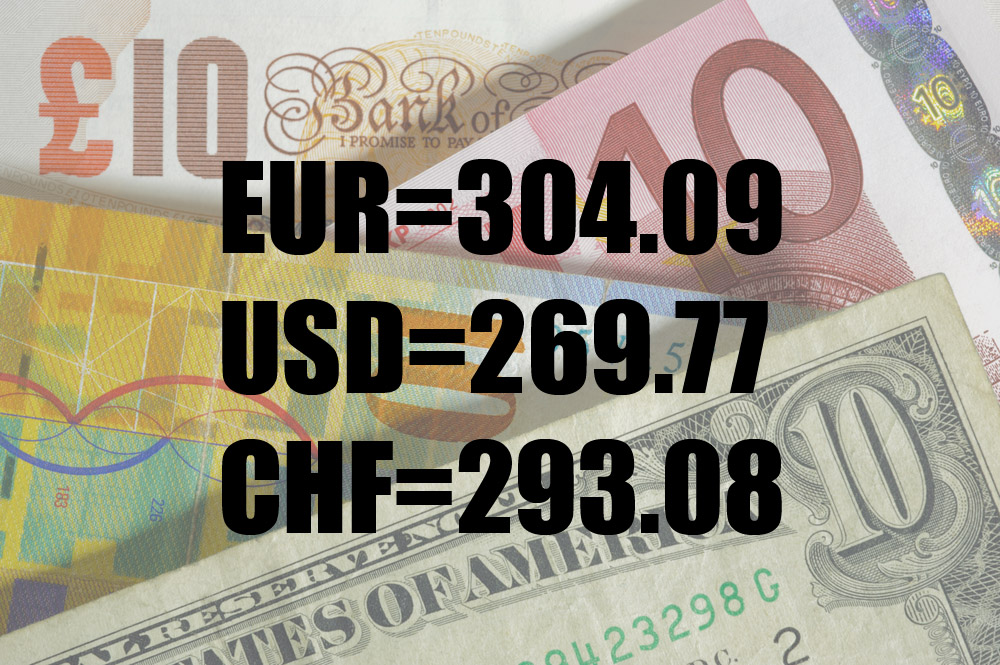Forint recovers on interbank market

The forint was trading at 304.09 to the euro late Thursday on the interbank forex market, up from 305.78 late Wednesday. At 305.57 to the euro early Thursday, the forint moved between 303.25 and 307.60, a second nearly two-month low in as many days.
The afternoon turnaround in the euro-dollar cross to the benefit of the dollar after data showed US jobless claims rose much less than expected last week, staying near a 15-year low, helped the forint to recuperate some of the weekʼs losses to the euro.
However, the forint is vulnerable on global and local factors, analysts say. The Hungarian currency is weak amid deterioration of sentiment on international markets in reaction to Fed Chair Janet Yellen warning stock markets are overvalued.
Hungarian central bankʼs minutes from the last rate meeting at the end of April showing more rate cuts are to come also hurt the forint.
Hungarian government bond yields are also on the rise on the secondary market, pulled by a continuing sell-off in markets of first-rated sovereigns, with the added drag that the pace of Hungarian yield rises has lagged those in first-rated markets, narrowing the risk premium. However, late Thursday afternoon, Hungarian yield rises suddenly outpaced those of Bunds that decelerated after US weekly jobless claims came in less-than-expected.
And, while foreign institutional investors tend to withdraw, with the largest, Franklin Templeton recently dumping 20% of its former HUF 2,000 bln holding according to the governmentʼs debt management agency ÁKK, Hungarian households boosted their holding of government securities to just over 10% of government securities in the central budget debt in April, with an even higher peak of 17% stake of forint-denominated debt, ÁKK also said. By end-April, the total volume of government securities sold only for households rose to HUF 2,653 bln.
Total outstanding forint denominated government securities debt stood at HUF 8,245 bln from a total central government gross debt of HUF 24,370.5 bln at the end of March, ÁKK statistics show.
While it may balance yields, this trend also eases forint demand by non-residents, analysts add.
The forint traded at 269.77 to the dollar, down from 269.31 late Wednesday. On Thursday, it moved between 268.93 and 270.79 after a more than two-month high at 268.08 Wednesday intraday.
It was quoted at 293.08 to the Swiss franc, up from 293.91 late Wednesday. Its range on Thursday was 292.52 to 297.89, a more than three-month low. Since its crash to an all-time low at 378.49 on January 15 when the Swiss central bank scrapped its cap of 1.20 to the euro, it reached the highest at 281.07 on February 26.
SUPPORT THE BUDAPEST BUSINESS JOURNAL
Producing journalism that is worthy of the name is a costly business. For 27 years, the publishers, editors and reporters of the Budapest Business Journal have striven to bring you business news that works, information that you can trust, that is factual, accurate and presented without fear or favor.
Newspaper organizations across the globe have struggled to find a business model that allows them to continue to excel, without compromising their ability to perform. Most recently, some have experimented with the idea of involving their most important stakeholders, their readers.
We would like to offer that same opportunity to our readers. We would like to invite you to help us deliver the quality business journalism you require. Hit our Support the BBJ button and you can choose the how much and how often you send us your contributions.








